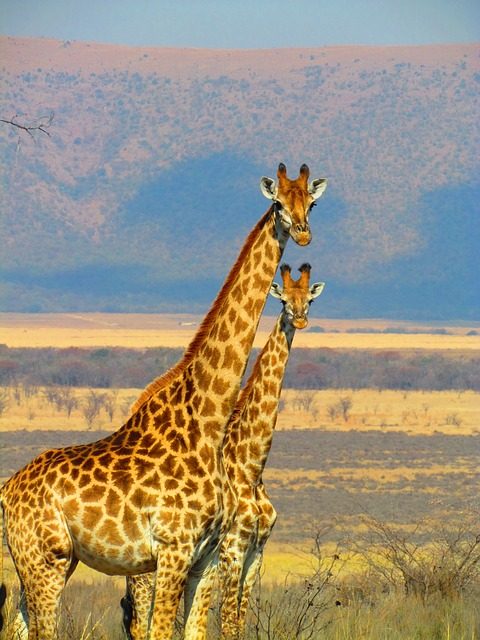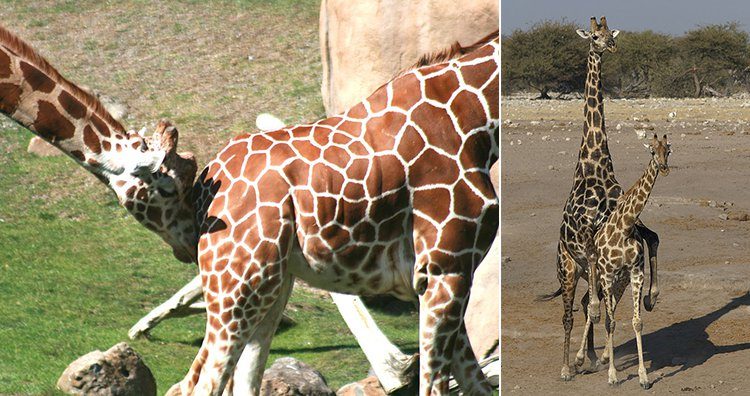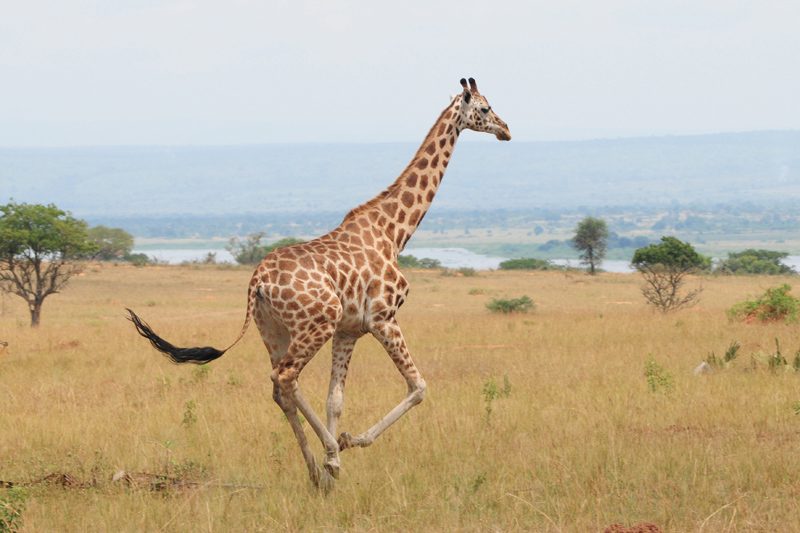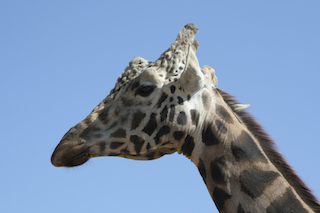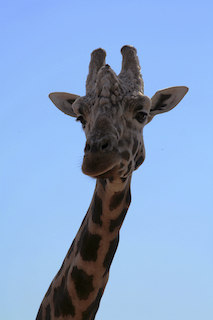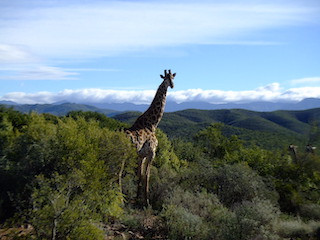Family Lives Of Giraffes In Kenya
The giraffe is related to cattle and deer, but it belongs to the Giraffidae family and the order Artiodactyla, which also includes Okapi occurring in the Democratic Republic of Congo. They both share the same characteristics such as the fur-covered ossicones, the four-chambered stomach, and the same body shape. But they have a different appearance because the okapi has a shorter neck.
Camel or leopard
The scientific name for giraffe is a Latin phrase called Giraffa Camelopardalis. The first part is an Arabic word Zarafa, which means fast walker. The second part, camelopard, is an ancient Greek word for camel and leopard. It gets its name because giraffe was thought to resemble both camel and leopard.
Group social system
A group of giraffes on the move is called a journey, and a standing group is a tower. The animal has a fission-fusion social system, which means that the group composition changes between weeks, days and sometimes even hours. Usually, a team consists of females and their calves. The other sex will join the female groups only to seek mating partners.
Bizarre mating ritual
Since reproduction is polygamous, a few older males impregnate all the females in a herd. The mating behavior and rituals of the giraffes are rather complicated and downright bizarre, to say the least. The men keep track of the periods when the females are ready for sex and determine female fertility through a process known as the flehmen response. The process involves a kinky-sounding procedure wherein the female will urinate into the male’s mouth, and by tasting her urine, they detect her estrus. In other words, the urine has a peculiar taste when the female is ready to mate. Unless that is present, he knows to leave her alone. But if she is ready, the male scuffles around her while she waits for the strongest male giraffe to dispatch the competition, which is a fight using head butting and neck banging. The winner gets to mate with her. Females can get pregnant starting from their fourth year. The gestation period lasts up to 15 months, during when she refuses to mate, and will only consent to have sex between pregnancies, but only every two weeks.
Rough birth giving
Interestingly and instinctively, females often return to the place where they were born to give birth. Giraffes give birth while standing, and the placenta sack bursts when the baby falls headfirst to the ground. The calves receive a rough welcome, falling over five feet to the earth. So, the first thing a calf experience is a sudden drop onto the hard, cold ground, but it never gets hurt from the fall. Fortunately, the calves can run within an hour after birth. Sometimes it is left alone by the mother for most of the day. During times like this, the calf remains quiet until the mother returns.
Entering safe zone
The giraffe calf can start to sample solid food within a week of birth. But the child giraffes roam the African plains with real danger all around them because they are vulnerable to lions and hyenas. Hence, most calves only survive the first few months. But once they have reached the age of two, they have entered the safe zone because they are no more vulnerable to the predators.
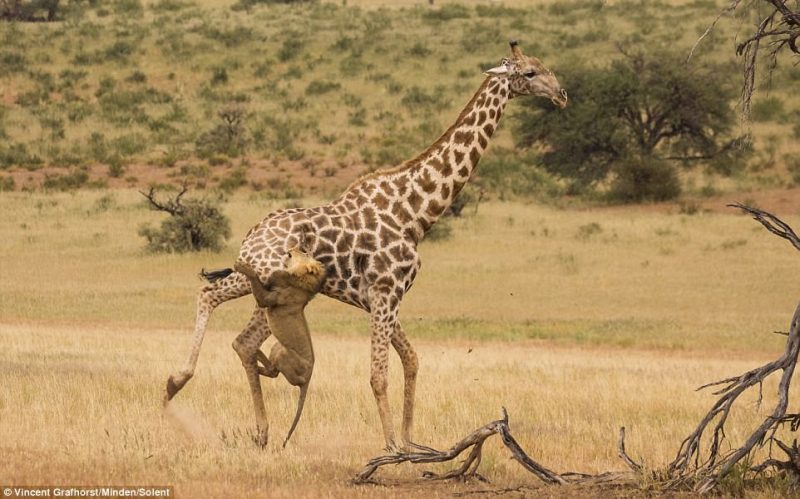
Lions and hyenas hunt the giraffe, but a mature giraffe is never an easy prey because it is well-versed in self-defence
Survival tactics from predators
Being the tallest animal certainly has its advantages, but that does not make the giraffes immune to the ecological danger around them. Lions and hyenas hunt the giraffe, but a mature giraffe is never an easy prey because it is well-versed in self-defence. If pursued and attacked by predators, they use their defense mechanism by which they kick the animals by a large force. Each of its massive and sturdy legs ends in a sharp, hard, 30-centimeter hoof. It can kick in a number of ways and in any direction.
Kicks can kill
The kick is so powerful and lethal that even the fearsome lions avoid such conflicts because they know that it is a high risk that can render them unconscious. The impact of a kick can break the lion’s spine, shatter its skull, decapitate or even kill it. The predators only target the adult giraffes when they have no choice. Therefore, after passing the age threshold, with the right conditions, giraffes can successfully live for about 25 years.
Slow but fast
A giraffe’s walk might seem slow, but it can cover 5 meters with every step. That translates even a lazy, leisurely cruise to 16 kilometers per hour. The pace of the giraffe is amble as the length of its leg compels an unusual gait. It moves forward both the back and front legs on one side at the same time followed by the other side. In other words, the right legs move together followed by the left. At high speed, the back legs tend to cross outside the front.
Faster than horses
A giraffe can run incredibly fast, although it looks clumsy and ridiculously unbalanced, thanks to their top-heaviness and cumbersome-looking limbs. It’s quick and graceful gallop can easily outpace even horses. But giraffes are unlikely to replace them as it cannot sustain a lengthened chase. Their long windpipes quickly run out of breath, and they eventually succumb to exhaustion.
Giraffe bush dance
The giraffe’s pace and gallop may seem clumsy, but African belief systems greatly revere the animal which gave birth to the Giraffe Dance. It started off when a woman in the 1950s saw a vision of a herd of giraffes running in the rain. Their hooves and the raindrops beat a beautiful melody, which turned into the Giraffe Song, which in turn spawned a Giraffe Dance. It is a mystical dance consisting of the men dancing in a large circle. The women sit in the circle in a group, playing and singing the Giraffe Song.
Gender neutral nature
By judging from the family structure, one can easily believe that giraffes are patriarchal in nature. However, when it comes to susceptibility to the external threat both the males and females are equally exposed. It could perhaps be nature’s way of putting them on the same footing.
To receive a colourful digibook about giraffe with videos, images and text, please fill out the following form or simply email us on safaris@safari-center.com

